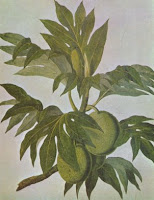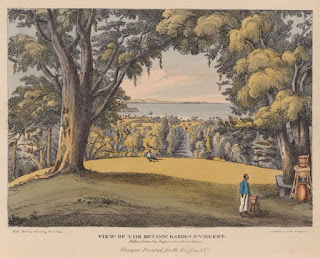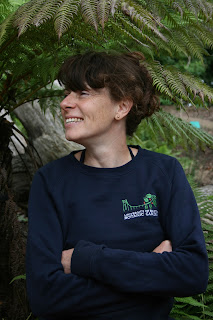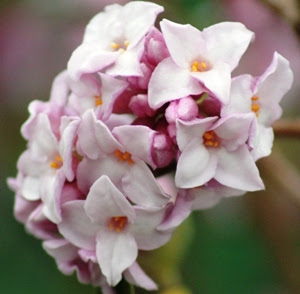 |
| Breadfruit |
 |
| Captain Bligh |
Andy Winfield
 |
| St Vincent Botanic Garden in 1825 |

University of Bristol Botanic Garden
Lose yourself in the world of plants…
 |
| Breadfruit |
 |
| Captain Bligh |
Andy Winfield
 |
| St Vincent Botanic Garden in 1825 |
| Pink wire flamingos on site for this year’s event. |
| Me when the Garden was mud! |
up the south facing sunshine. Seeing the people of Bristol and beyond pointing, smelling the plants and taking selfies amongst the statues makes all the development years worthwhile because this Garden is for people to get something out of, whether its mind nourishment, peacefulness, somewhere to take the kids or they just like gardens.
| Sculpture in the Med. |
Mediterranean display. They are brilliant, from a range of backgrounds and different areas of Bristol all brought together because they love plants. Working in an environment like this during an event like the Easter Sculpture festival gives me an appreciation of the best of humanity. There is a lot to bring us down on the news and in papers, but a trip to the Garden over Easter will show what can be achieved with a bit of passion and goodwill; a Botanic Garden community thriving next to a creative skill with ceramics, wood, metal, willow and glass.
by Andy Winfield
This cold spell will end, the blossom will come out and the birds will start singing again. Spring is still coming.
by Andy Winfield
| By Susan Stephens |
According to a report by the Royal Botanic Gardens at Kew in 2016, there are around 391,000 species of plants in the world and around 94% of these are flowering plants. Plants are grouped in families based on their physical and genetic characteristics. One of the largest flowering plant families is the Orchidaceae, or Orchid family with around 28,000 species, so around 10% of all flowering plant species. Recent DNA research shows that at over 90 million years old, orchids are amongst the most ancient of the flowering plant families.
Orchids can be found throughout the world in every type of habitat and climatic zone apart from the
| Coelygene cristata |
very driest deserts and glaciers, and on every continent except Antarctica. The majority of orchids are found in the tropics of Asia, South America and Central America and new species are constantly being discovered, particularly in these areas. Their tiny, dust like seed that has enables orchids to disperse and travel great distances, carried on the wind across oceans and continents to colonise the world. The majority of these tropical and sub tropical orchids are epiphytes and grow anchored to trees. They are not parasitic and so do not feed upon the tree but absorb water and nutrients from the rain, air and other debris that collects nearby with the aid of their aerial roots; the tree to enables them to reach higher elevations and so have more access to sun and air. An example of epiphytes you can see in the Garden is the Dendrobium; Dendrobium, derives from the Greek dendron meaning tree and bios meaning life. It literally means “one who lives on trees” or essentially epiphyte.
| Dactylorhiza fuchsii |
Terrestrial orchids grow on the ground and can be found in places as diverse as the hot, dry Australian deserts to the shade of temperate woodlands. They are found in areas of Russia extending to the very edge of the Arctic Circle. All of the 52 or so species of orchid found in the UK are terrestrial orchids including Ophrys apifera (the bee orchid) and Dactylorhiza fuchsii (the common spotted orchid).
Lithophytes are somewhere between the epiphytes and terrestrials in that they make their homes on rocky cliff faces. They obtain their nutrients and water in a similar way to epiphytes relying upon regular mists and rain for moisture. Extra moisture is obtained from roots that meander and penetrate into the crevices in the rocks. Some species of Paphiopedilum and Pleiones are lithophytes.
Orchids use a wide range of inventive methods to attract pollinators. Most orchids rely on specific
| Ophrys apifera, the bee orchid |
pollinators and in most cases orchid and pollinator have evolved together. Nectar is the main reward to entice pollinators but also use of colour, shape, fragrance and sometimes mimicry is applied. Orchids attracting butterflies and hummingbirds are brightly coloured but not necessarily fragrant while orchids which wish to attract moths and night flying insects are usually white or green and very fragrant at night. The Bulbophyllum species of orchid are brown or fleshy red and are foul smelling to attract the flies which pollinate them. Some orchids deceive their pollinators by mimicking the appearance and scents produced by female insects. The male insect will attempt to mate with the false female and in the process, the orchid deposits pollen on the insects head which he carries to the next flower.
The orchid family is probably one of the most important plant families from a horticultural point of view and are grown for the amazing variety
and beauty of their flowers. Enthusiasts will pay thousands of pounds for a rare specimen. Otherwise, considering the size of the family, orchids have very few commercial uses. The only commercially important product
 |
| Vanilla planifolia |
derived from orchids is vanilla which is used for flavouring foods, drinks and cosmetics. Most vanilla is produced from one species, Vanilla planifolia. The plant is a climbing vine form of orchid native to Central and South America. Vanilla production today is mainly in Madagascar which is the largest producer of vanilla beans. However the island lacks the plant’s pollinating bee species so the flowers must be hand pollinated.
The underground tubers of a terrestrial orchid, usually Orchis mascula (early purple orchid) are ground to a powder and used for cooking, such as in the hot beverage salep or in the Turkish frozen treat dondurma. Traditional Chinese medicine uses orchids extensively for combating various different ailments. Of the thousands of species of orchids known to us, about 50 orchid species are used in Chinese herbal medications.
 |
| Pleione formosiana |
Here at the garden we have a large display of around 75 different species of orchids mainly in the sub tropical and tropical glasshouse. These include epiphytes such as Coelogyne and Dendrobiumspecies many of which are displayed on our fake but very realistic trees in an effort to replicate their natural habitats. There are also many terrestial orchids displayed in pots in the sub tropical glasshouse
including Stenoglottis longifolia with it’s spikes of many small, lilac, speckled flowers and Paphiopedilumspecies often known as slipper orchids because of it’s pouch like lip. The amazing twining vines of Vanilla planifolium can be found in the tropical glasshouse. Outside in the Chinese Herb Garden, terrestial orchid Pleione are displayed in the summer and the Dactylorhiza fuchsii can be seen growing beside the lake. Whatever time of year you visit the garden you will always find orchids in flower in the tropical and sub tropical glasshouses. Right now Coelogyne cristata, an epiphytic orchid from the cool monsoon forests of the Himalayas, is covered in cascades of brilliant white flowers with a bright yellow centre and wavy petals. It has rounded pseudobulbs and the light scent of jasmine. Another Coelogyne flowering in the sub tropical glasshouse at the moment is Coelogyne flaccida with it’s long racemes of creamy white flowers with yellow and brown markings. It has a sweet, light scent and cone shaped pseudobulbs which resemble bananas. The Dendrochilum glumaceum which is native to the Phillipines, is putting on a fantastic display with masses of long feathery pendulous spikes containing two rows of small pure white flowers with a yellow lip and smelling of sweet hay.
| Dendrochilum glumaceum |
 |
| By Nicola ‘Froggie’ Rathbone |
I studied Latin at Secondary school. Not because I wanted to but because I had to at the time. Bam bas bat bamus batis bant. For some reason this has stuck in my head, as has ego sum (I am ) and salve magistra (greetings teacher). I never thought it would be of use to me until I became a gardener. It has been of great help in learning and more about plants and I am going to try and explain why and how you too can discover more about plants.
| Bluebells… |
you with more information about the plant. Clues as to which country the plant came from or perhaps the first person to see it growing in the wild. The name often describes the appearance of the leaves and the flowers and the habitat you would need to replicate if you want to grow it in your garden. The names may feature characters and narrate stories from Greek mythology and honour people of note through history. Many English words are derived from Latin, Greek and Arabic and you will be surprised at how much you can actually understand. Now, back to bluebell. The English one. Hyacinthoides non-scripta. Here’s your challenge if you have time and want to know more and here’s a clue. Hyacinthus was a tragic Spartan prince and ‘non scripta’ means no writing . The rest of the story and how the English bluebell got this name is on the internet or in the library. If you would rather not and do not have time then when you next explore the garden look out for the following used to describe plants in some way.
 |
| The leaves of Acer palmatum on Ophiopogon planiscapus ‘Nigrescens’ |
Describe the leaf shape and the edge of the leaf. Also the size, texture and colour. The Latin phylla(um)(us) and folia(ium)(ius) mean leaf.
Froggie
| Eranthus hymalis |
hymalis); in a few weeks it will dot the borders with tiny butter yellow flowers. Growing naturally in deciduous woodland, this plant flowers before the leaves on trees shade out the forest floor and as the sun strengthens as it gets higher in the sky.
 |
| Daphne bholua ‘Jacqueline Postill’ |
In the Mediterranean display the Corsican hellebore (Helleborus argutifolius) is in full flower and the handsome foliage gives good structure to a winter border. It grows all over Corsica and Sardinia but unusually has never made it onto the mainland of France or Italy.
| Paphiopedalum |
| Hay scented orchid |
| Laelia anceps |
 |
| By Andy Winfield |
| Witch Hazel in early January 2017 |
movement in the soil, small signposts to spring that don’t occur before midwinter. Snowdrops and winter aconite emerge in January; tiny and fragrant flowers emerge on shrubs such as witch-hazel, Daphne, winter flowering honey suckle and Christmas box. These plants need to attract the few pollinators that may be around from long distances, hence using strong scent rather that the colourful showy flowers we see through summer.
 |
| A goldfinch eating the seeds from a teasel plant. |
 |
| Our efforts on the left, Oaxaca market stall on right. (right photo by Alejandro LinaresGarcia) |
 |
| By Matt Philpott, Botanic Garden trainee |
| Nelumbo nucifera |
 |
| Buddha on a lotus throne. |
 |
| By Claire Cope |
Having worked as a trainee at the Botanic Garden for nearly two years I am now coming to the end of my time with the garden. I have learned more than I thought possible to learn in just two years, have gained my RHS qualifications, have had the opportunity to work with an amazing range of plants and have acquired a huge amount of practical horticultural experience. Best of all, I have had the opportunity to work alongside some very wonderful people who have shared their knowledge and passion with me and have made me feel very welcomed into this beautiful community.
| Squash originated in South America and was one of the ‘three sisters’. |
been being cultivated for so many years. Many plants that today we consider as staples such as tomatoes, potatoes, beans, corn, squash, and peppers were originally cultivated thousands of years ago by native civilisations such as the Inca, Maya and Aztec peoples.
| Quinoa |
| Cyclanthera pedata |
of before which have the potential to be incorporated into western food production in the future. For instance – I really enjoyed growing the Cyclanthera pedata ‘Fat Baby’ and ‘Bolivian Giant’. These were vigorous climbers which produced very strange spikey green fruits which tasted just like a cucumber!
Some of the cultivars chosen for the display had really interesting stories – for example the beans we grew, Phaseolus vulgaris ’Cherokee trail of tears’, were originally from the native American Cherokee people who were driven out of their homelands by European settlers – a forced march know as ‘Trail of Tears’. This bean was one of their heirlooms which has been passed from generation to generation ever since.
| Before and after, marking out the Phylogeny display in February 2006; below, as it is today. |
work ending as a Costs Draftsman for a Bristol Law firm. It was at this point I considered my future working life stretching ahead and didn’t like it; and so I shifted direction and embarked on a career in horticulture. This was a good move! After a two-year course I landed a job at the University of Bristol Botanic Garden, this was 2001 and the little-known Garden was tucked away in woods beyond Bristol’s famous suspension bridge spanning the Avon Gorge. The gardening was good and the range of plants we dealt with inspiring; we held large plant sales that kept the Garden afloat and paid my wages.
| The new cone of the cycad Encephartos ferox emerging. |
| Musa basjoo, the Japanese banana wrapped up for six months of winter |
 |
| 21st century pruning… |